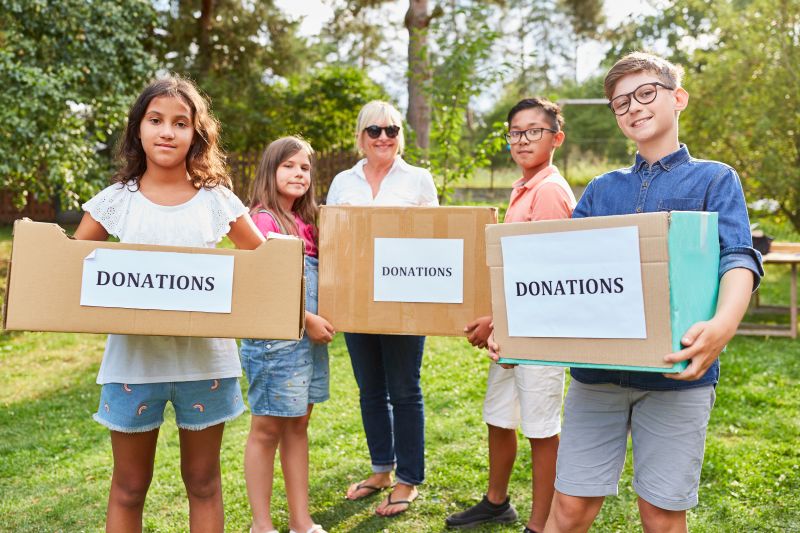Winning tips for your school fundraiser
Need some extra dough for that leaky roof, or that school trip? Fundraisers are a tried and true way to top up the school coffers.

School budgets are historically tight — it’s a sad fact that has remained unchanged for decades.
Luckily, the ingenuity and passion of teachers, educators, admin staff and school communities have always met funding challenges with their own solutions.
Over the course of many years, the list of possible fundraisers has been expanded upon by pioneering and innovative educators to meet all sorts of needs: property maintenance, school trips, classroom equipment, craft and technology supplies, uniforms, even basic school stationery. With fundraisers, schools can overcome existing budget constraints.
Read the latest print edition of School News HERE
But as with any endeavour, efficiency and effectiveness need to be considered — which types of fundraisers are the easiest to coordinate and implement? Which have low start-up costs and worthwhile profits to fund the required project?
First, a note on good practice. The Ministry of Education provides details on its website about the obligations of the board and proprietors when undertaking fundraising campaigns. The school is required to comply with regulations stated in the Education and Training Act 2020 and the Crown Entities Act 2004. It’s important that the purpose of the fundraising and the beneficiary(ies) are clearly stated and communicated to participants of the fundraiser. Proper accounting and records should be kept, and different requirements are outlined depending on whether the funds are raised by the board or the proprietor of the school. Accountability and governance requirements should be checked by any institution undertaking fundraising activity.
Schools should work collaboratively with parent communities to facilitate fundraisers. Clear parameters should be established, including what the fundraiser is for, how and when details will be communicated with the school community and, if appropriate, wider community, and the monetary goal.
These considerations feed into the question of efficiency and effectiveness of fundraisers. By their nature, some fundraising campaigns will be easy to administer and others more complex. Ultimately, school fundraisers should weigh their costs against their gains. Longer campaigns may have more administration attached, but they may also result in a much larger funding pool. Consider the needs of your school, its capacity, and the purpose of the event.
Whatever the fundraiser, successful events need buy-in and commitment from both senior leadership and the fundraising committee. Timing will also play a role in the success of the fundraiser: check calendar dates for both the school year and the public. School fundraisers shouldn’t coincide with other school events or extracurriculars that could interfere with participation in the event.
School staff, as well, can support fundraising efforts. Helping to explain the benefits the fundraiser will have for the school community or specific links to learning opportunities may assist in validating the fundraiser, deeming it worthwhile to students, parents and their families.

Engaging the school community is also integral to the success of any fundraising endeavour. Students who can see direct benefits for themselves may be more inclined to volunteer their time or services to assist with fundraising. Similarly, parents who can identify a need and recognise the benefit of a school fundraiser may be more likely to lend their support to the fundraiser.
To encourage buy-in from the wider community, it’s important to get the students excited and involved. Depending on the school’s needs, short fundraisers of half-days, full-days or even a weekend can be sufficient for revenue raising. For larger projects that need a bigger campaign, a timeline of weeks may be appropriate. However, it’s important to ensure that campaigns don’t drag on so long that the community becomes tired, and funds dry up.
Now that we have the basics out of the way, it’s time to consider exactly what fundraisers for your school or community may look like.
First, easy, short and minimally administrative fundraisers could be as simple as an out-of-uniform day. For a gold-coin donation or similarly small cost, an out-of-uniform day could raise a small amount of money to meet a shortfall for maintenance costs or top up essential supplies without dipping into existing funding pools.
A step up from this would be organising a fair or sporting event – these require more administration and oversight, including workplace health and safety checks and equipment hire.
Your school could choose to team up with local businesses. This option has the bonus of minimising administrative burden by sharing resourcing and organisational responsibilities. Looking for businesses which supply household essentials like first aid kits, shopping bags or food containers are sure to result in a successful fundraiser.
External providers can help provide your school with all you need for a fundraiser, including items for sale and the administrative support to collect funds. Keepsakes can make excellent gifts for occasions such as Mother’s Day, Father’s Day and Christmas. Photo frames and photo keyrings, coffee mugs and pens all provide mementos the whole family can cherish. Fundraising around Easter could involve the sale of hot cross buns or chocolate; hand painted ornaments or specialist wrapping paper would serve well at Christmas time.
Recent shifts in community consciousness towards caring for the planet make reusable items a great choice for fundraising. A variety of products are available to schools, including reusable coffee mugs, shopping bags and food containers. Other household items like hand sanitiser, sunscreen and band aids are also popular fundraising items. These products can include school-specific branding, thus serving the dual purpose of fundraising and marketing.
Added incentives like prizes for the best sellers can also go a long way to improving fundraising outcomes.









